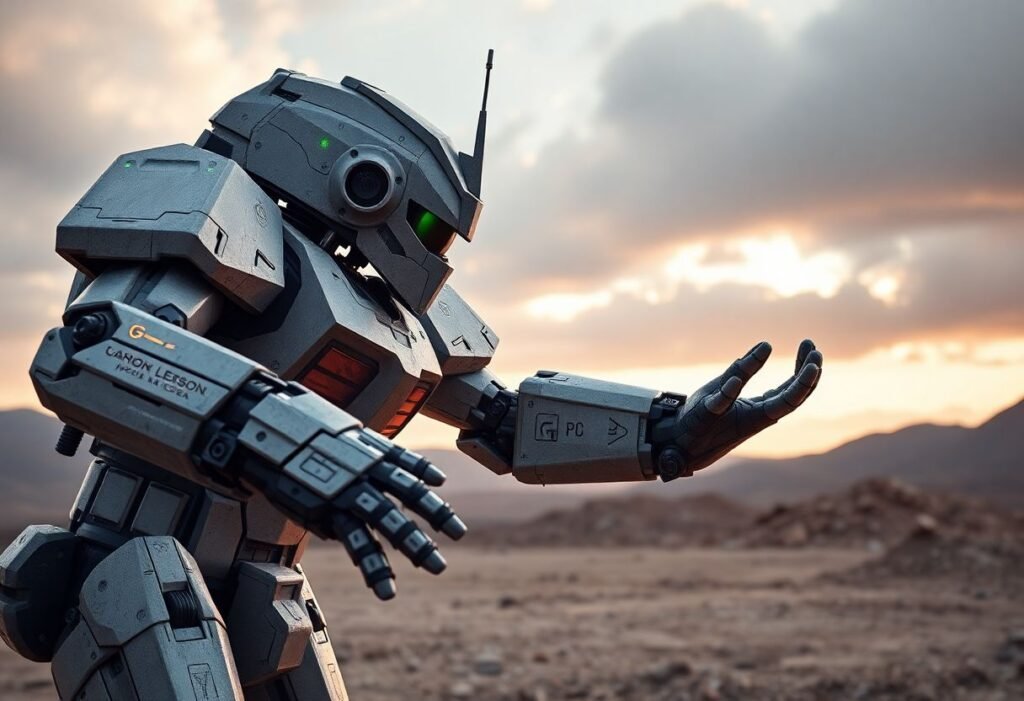The launch of the GR-2 humanoid robot marks a significant advancement in robotics, showcasing innovations that elevate its functionality and presence in various applications. Understanding these enhancements is crucial for those interested in the future of AI and automation.
Introducing the Next Generation: GR-2 Humanoid Robot
Fourier Intelligence has unveiled the latest iteration of its humanoid robot, the GR-2. This model is not only taller and heavier but also exhibits improved intelligence and dexterity compared to its predecessor, the GR-1. Weighing in with advanced capabilities, the GR-2 is designed to assist in tasks that require fine motor skills, making it a remarkable addition to the field of humanoid robotics. Its enhanced sensors and processing capabilities allow for sophisticated interactions with both environments and users, embodying a step closer to more refined human-robot cooperation.
Significant Design Overhaul for Enhanced Performance
The GR-2 features a major redesign that boosts its operational efficiency and user adaptability. Among the most striking improvements are its **newly upgraded hands**, which offer increased dexterity and grip strength. This allows the robot to perform intricate tasks, from delicate assembly work to heavy lifting—task capabilities that are essential for integration into various sectors such as healthcare, manufacturing, and logistics. With these design enhancements, the GR-2 is set to redefine the standard for functional humanoids in practical settings.
Advanced Intelligence: Driving the Future of Automation
Equipped with powerful artificial intelligence, the GR-2 incorporates advanced learning algorithms that enable it to adapt and improve its performance over time. This operational intelligence not only enhances its efficiency in performing designated tasks but also allows it to interact in a more human-like manner. The introduction of AI-driven functions paves the way for a future where humanoids can take on roles traditionally filled by humans, thereby reshaping workforce dynamics and productivity in various industries.
Applications Across Multiple Industries
The capabilities of the GR-2 extend beyond mere robotic features; its applications can revolutionize multiple industries. In healthcare settings, for example, it can assist with patient care, providing support in mobility and daily activities. In industrial environments, the GR-2 could be employed for repetitive tasks, reducing human workload and augmenting operational efficiency. As such, its potential to improve workflow and safety conditions cannot be understated, making it a valuable asset in any sector.
The Economic Impact of Humanoid Robotics
As humanoid robots like the GR-2 become more prevalent, their economic impact will be significant. Companies are likely to see cost reductions in labor while improving service delivery. Furthermore, the integration of such advanced robots can lead to the creation of new job opportunities focused on robot maintenance, programming, and oversight. This shift represents a delicately balanced evolution in the job market where humans and robots coexist, ideally benefiting from each other’s strengths.
The Future of Robotics: What Lies Ahead
The introduction of the GR-2 sets a precedent for future innovations in humanoid robotics. Its combination of **powerful functions**, **user-friendly design**, and advanced AI marks a pivotal moment in the robotics industry. As technology continues to develop, we can anticipate further enhancements to humanoid capabilities, leading potentially to robots that can seamlessly interact with humans across all societal sectors. The future is promising, with the trajectory of humanoid robotics steering towards unprecedented advances.
Disclaimer: The information provided in this article is for informational purposes only and should not be considered as professional advice.





















